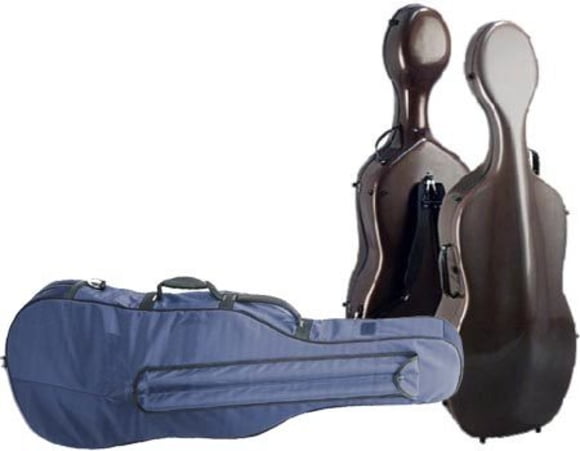8. Transport
If you are a beginner thinking about getting your own cello for the first time, you probably aren't thinking that much about transportation, but seeing that the cello is a relatively large instrument, it can't simply be placed in your pocket like a flute.
The means of transport you'll need for your instrument depends on whether you mainly practice and play at home or if you travel a lot. You may have to go to class, cycle to orchestra rehearsals or maybe you want to take your cello to a friends place. Some options are more suitable than others for these applications.
Ultimately, there are two things to consider when choosing your means of transport: How well will the instrument be protected and how will you carry it?
When considering the amount of protection needed you should take into account the value of your instrument. A more expensive instrument is more difficult to replace and should have equally good protection. The amount of protection depends on the dangers along the way. If, for example, you have your cello in a bag while traveling by public transport, sudden braking by a bus driver could cause your cello to be crushed to splinters. Something a good hard case can prevent. While the above description may be a little exaggerated it would still be annoying if "only" the bridge slipped out of position or fell off entirely from a bump. However, cases have their limits too, falling off of a bicycle could cause damage regardless of the strength of the case.
Gigbags
There are different types and styles, from those which are barely padded, acting only as a cover to protect from scratches, to very thickly padded luxury versions with sophisticated carrying systems. Advantages of the former are the low weight, flexibility, and generally cheaper price tag compared to beefier versions. Many complete cello sets will even come with a bag like this and if you only rarely transport your cello and it isn't very expensive to begin with, this type of bag will do just fine. But you should still pay attention quality of the material used. If you are planning to carry it on your back a lot you should make sure it has a good carrying system included, simple backpack straps are usually not very comfortable or stable. If you ever need to check you cello as baggage on a flight or similar then a bag isn't suitable. For that purpose you should get a case.
Cases
The best way to prevent transport damage is with a case. The standard weight of which is around 5kg, although lighter versions are available around 3kg. If you decide to purchase a case be aware that you'll be spending quite a bit more money. Cases can last as long as 20 years though, making them a good investment. Before making your purchase consider what you want out of the case: Will it just be used for transport? Or also for storage? Also, some models can be opened standing up, without the cello falling out, while others can only be opened on the ground. Some cases even have wheels on the bottom edge, meaning they can be pulled along behind you. Sometimes the supplied backpack straps aren't sufficient when carrying the case by foot or on a bicycle, to make it more manageable and comfortable you may have to buy an additional carrying system, for example, the Fiedler carrying system.
Of course, color and material also play an important role when selecting a case. A dark, thin-walled case heats up more quickly in direct sunlight, and by extension the instrument inside it, than a lighter colored or thicker walled case. And a cello should always be protected from extreme temperature fluctuations. To assist with this some cases come equipped with a hygrometer and a humidifier, allowing you to monitor and better protect your instrument.



